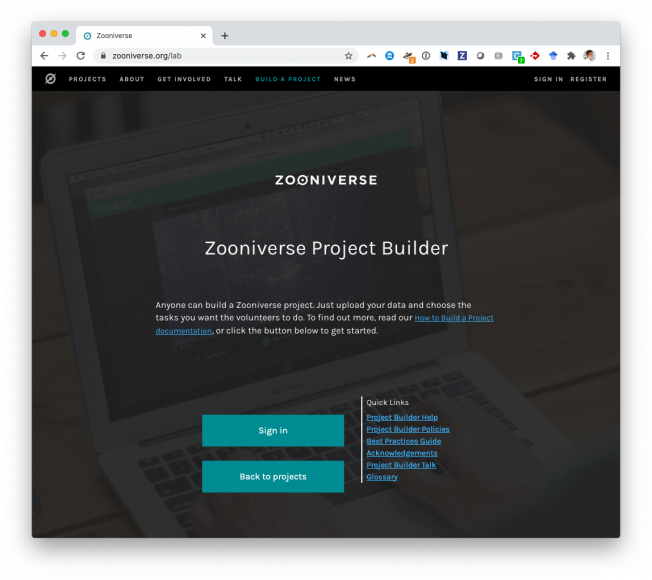The Seventeenth Data Release of the Sloan Digital Sky Surveys: Complete Release of MaNGA, MaStar and APOGEE-2 Data
(2021)
Authors:
Abdurro'uf, Katherine Accetta, Conny Aerts, Victor Silva Aguirre, Romina Ahumada, Nikhil Ajgaonkar, N Filiz Ak, Shadab Alam, Carlos Allende Prieto, Andres Almeida, Friedrich Anders, Scott F Anderson, Brett H Andrews, Borja Anguiano, Erik Aquino-Ortiz, Alfonso Aragon-Salamanca, Maria Argudo-Fernandez, Metin Ata, Marie Aubert, Vladimir Avila-Reese, Carles Badenes, Rodolfo H Barba, Kat Barger, Jorge K Barrera-Ballesteros, Rachael L Beaton, Timothy C Beers, Francesco Belfiore, Chad F Bender, Mariangela Bernardi, Matthew A Bershady, Florian Beutler, Christian Moni Bidin, Jonathan C Bird, Dmitry Bizyaev, Guillermo A Blanc, Michael R Blanton, Nicholas Fraser Boardman, Adam S Bolton, Mederic Boquien, Jura Borissova, Jo Bovy, WN Brandt, Jordan Brown, Joel R Brownstein, Marcella Brusa, Johannes Buchner, Kevin Bundy, Joseph N Burchett, Martin Bureau, Adam Burgasser, Tuesday K Cabang, Stephanie Campbell, Michele Cappellari, Joleen K Carlberg, Fabio Carneiro Wanderley, Ricardo Carrera, Jennifer Cash, Yan-Ping Chen, Wei-Huai Chen, Brian Cherinka, Cristina Chiappini, Peter Doohyun Choi, S Drew Chojnowski, Haeun Chung, Nicolas Clerc, Roger E Cohen, Julia M Comerford, Johan Comparat, Luiz da Costa, Kevin Covey, Jeffrey D Crane, Irene Cruz-Gonzalez, Connor Culhane, Katia Cunha, Y Sophia Dai, Guillermo Damke, Jeremy Darling, James W Davidson, Roger Davies, Kyle Dawson, Nathan De Lee, Aleksandar M Diamond-Stanic, Mariana Cano-Diaz, Helena Dominguez Sanchez, John Donor, Chris Duckworth, Tom Dwelly, Daniel J Eisenstein, Yvonne P Elsworth, Eric Emsellem, Mike Eracleous, Stephanie Escoffier, Xiaohui Fan, Emily Farr, Shuai Feng, Jose G Fernandez-Trincado, Diane Feuillet, Andreas Filipp, Sean P Fillingham, Peter M Frinchaboy, Sebastien Fromenteau, Lluis Galbany, Rafael A Garcia, DA Garcia-Hernandez, Junqiang Ge, Doug Geisler, Joseph Gelfand, Tobias Geron, Benjamin J Gibson, Julian Goddy, Diego Godoy-Rivera, Kathleen Grabowski, Paul J Green, Michael Greener, Catherine J Grier, Emily Griffith, Hong Guo, Julien Guy, Massinissa Hadjara, Paul Harding, Sten Hasselquist, Christian R Hayes, Fred Hearty, Jesus Hernandez, Lewis Hill, David W Hogg, Jon A Holtzman, Danny Horta, Bau-Ching Hsieh, Chin-Hao Hsu, Yun-Hsin Hsu, Daniel Huber, Marc Huertas-Company, Brian Hutchinson, Ho Seong Hwang, Hector J Ibarra-Medel, Jacob Ider Chitham, Gabriele S Ilha, Julie Imig, Will Jaekle, Tharindu Jayasinghe, Xihan Ji, Jennifer A Johnson, Amy Jones, Henrik Jonsson, Ivan Katkov, Arman Khalatyan, Karen Kinemuchi, Shobhit Kisku, Johan H Knapen, Jean-Paul Kneib, Juna A Kollmeier, Miranda Kong, Marina Kounkel, Kathryn Kreckel, Dhanesh Krishnarao, Ivan Lacerna, Richard R Lane, Rachel Langgin, Ramon Lavender, David R Law, Daniel Lazarz, Henry W Leung, Ho-Hin Leung, Hannah M Lewis, Cheng Li, Ran Li, Jianhui Lian, Fu-Heng Liang, Lihwai Lin, Yen-Ting Lin, Sicheng Lin, Chris Lintott, Dan Long, Penelope Longa-Pena, Carlos Lopez-Coba, Shengdong Lu, Britt F Lundgren, Yuanze Luo, J Ted Mackereth, Axel de la Macorra, Suvrath Mahadevan, Steven R Majewski, Arturo Manchado, Travis Mandeville, Claudia Maraston, Berta Margalef-Bentabol, Thomas Masseron, Karen L Masters, Savita Mathur, Richard M McDermid, Myles Mckay, Andrea Merloni, Michael Merrifield, Szabolcs Meszaros, Andrea Miglio, Francesco Di Mille, Dante Minniti, Rebecca Minsley, Antonela Monachesi, Jeongin Moon, Benoit Mosser, John Mulchaey, Demitri Muna, Ricardo R Munoz, Adam D Myers, Natalie Myers, Seshadri Nadathur, Preethi Nair, Kirpal Nandra, Justus Neumann, Jeffrey A Newman, David L Nidever, Farnik Nikakhtar, Christian Nitschelm, Julia E O'Connell, Luis Garma-Oehmichen, Gabriel Luan Souza de Oliveira, Richard Olney, Daniel Oravetz, Mario Ortigoza-Urdaneta, Yeisson Osorio, Justin Otter, Zachary J Pace, Nelson Padilla, Kaike Pan, Hsi-An Pan, Taniya Parikh, James Parker, Sebastien Peirani, Karla Pena Ramirez, Samantha Penny, Will J Percival, Ismael Perez-Fournon, Marc Pinsonneault, Frederick Poidevin, Vijith Jacob Poovelil, Adrian M Price-Whelan, Anna Barbara de Andrade Queiroz, M Jordan Raddick, Amy Ray, Sandro Barboza Rembold, Nicole Riddle, Rogemar A Riffel, Rogerio Riffel, Hans-Walter Rix, Annie C Robin, Aldo Rodriguez-Puebla, Alexandre Roman-Lopes, Carlos Roman-Zuniga, Benjamin Rose, Ashley J Ross, Graziano Rossi, Kate HR Rubin, Mara Salvato, Sebastian F Sanchez, Jose R Sanchez-Gallego, Robyn Sanderson, Felipe Antonio Santana Rojas, Edgar Sarceno, Regina Sarmiento, Conor Sayres, Elizaveta Sazonova, Adam L Schaefer, Ricardo Schiavon, David J Schlegel, Donald P Schneider, Mathias Schultheis, Axel Schwope, Aldo Serenelli, Javier Serna, Zhengyi Shao, Griffin Shapiro, Anubhav Sharma, Yue Shen, Matthew Shetrone, Yiping Shu, Joshua D Simon, MF Skrutskie, Rebecca Smethurst, Verne Smith, Jennifer Sobeck, Taylor Spoo, Dani Sprague, David V Stark, Keivan G Stassun, Matthias Steinmetz, Dennis Stello, Alexander Stone-Martinez, Thaisa Storchi-Bergmann, Guy S Stringfellow, Amelia Stutz, Yung-Chau Su, Manuchehr Taghizadeh-Popp, Michael S Talbot, Jamie Tayar, Eduardo Telles, Johanna Teske, Ani Thakar, Christopher Theissen, Daniel Thomas, Andrew Tkachenko, Rita Tojeiro, Hector Hernandez Toledo, Nicholas W Troup, Jonathan R Trump, James Trussler, Jacqueline Turner, Sarah Tuttle, Eduardo Unda-Sanzana, Jose Antonio Vazquez-Mata, Marica Valentini, Octavio Valenzuela, Jaime Vargas-Gonzalez, Mariana Vargas-Magana, Pablo Vera Alfaro, Sandro Villanova, Fiorenzo Vincenzo, David Wake, Jack T Warfield, Jessica Diane Washington, Benjamin Alan Weaver, Anne-Marie Weijmans, David H Weinberg, Achim Weiss, Kyle B Westfall, Vivienne Wild, Matthew C Wilde, John C Wilson, Robert F Wilson, Mikayla Wilson, Julien Wolf, WM Wood-Vasey, Renbin Yan, Olga Zamora, Gail Zasowski, Kai Zhang, Cheng Zhao, Zheng Zheng, Zheng Zheng, Kai Zhu



